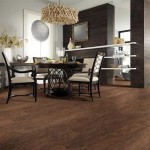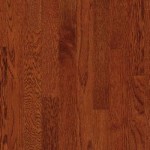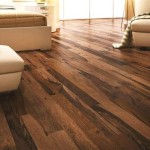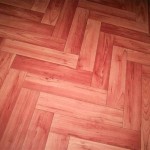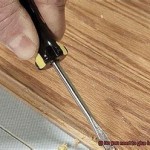What Is The Best Grade Of Hardwood Flooring?
Hardwood flooring adds warmth, elegance, and value to any home. However, navigating the various grades and types can be overwhelming. Understanding hardwood grading helps consumers make informed decisions based on their budget, aesthetic preferences, and the traffic levels in their homes. This guide will explore the different hardwood flooring grades and their characteristics to help determine the best fit for individual needs.
Understanding Hardwood Flooring Grades
Hardwood flooring is typically graded based on the appearance of the wood planks. These grades reflect the natural characteristics of the wood, such as knots, mineral streaks, and color variations. While the grading system might vary slightly between manufacturers, the general principles remain consistent. Higher grades generally exhibit fewer natural imperfections and a more uniform appearance, while lower grades embrace the natural character of the wood, showcasing knots and color variations.
First Grade: Clear and Uniform
First-grade hardwood flooring represents the highest quality available. It features long, clear boards with minimal color variation and very few knots. The uniform appearance creates a sleek and sophisticated look. This grade is ideal for formal spaces and homeowners seeking a polished aesthetic. Due to its limited natural characteristics, first-grade hardwood often comes at a premium price. It is also less tolerant of imperfections caused by wear and tear, making it less suitable for high-traffic areas or homes with pets and children.
Second Grade: A Balance of Beauty and Character
Second-grade hardwood offers a balance between uniformity and character. It allows for slightly more color variation and a few small knots. These natural markings add visual interest and warmth to the flooring without compromising its overall refined appearance. Second-grade hardwood is a popular choice for many homeowners as it provides a high-quality look at a more accessible price point than first grade. It is suitable for various settings, from living rooms and bedrooms to dining areas with moderate traffic.
Third Grade: Rustic Charm and Natural Variations
Third-grade hardwood, sometimes referred to as common grade, embraces the natural character of the wood. It displays a wider range of color variation, larger knots, and other natural markings such as mineral streaks. This grade provides a rustic and authentic aesthetic, adding a unique touch to any space. Third-grade hardwood offers a cost-effective option for homeowners who appreciate the natural beauty of wood. It is best suited for casual spaces and areas where imperfections add to the overall design aesthetic. Due to the variations in color and texture, careful installation is crucial to create a visually appealing floor.
Beyond Traditional Grading: Select, Character, and Rustic
In addition to the numerical grading system, some manufacturers use descriptive terms like Select, Character, and Rustic to categorize their hardwood flooring. "Select" often aligns with the characteristics of first and second grades, highlighting uniform appearance and minimal knots. "Character" grade showcases more of the wood's natural features, including knots and color variation, similar to second and third grades. "Rustic" grade embraces the full spectrum of natural characteristics, showcasing knots, mineral streaks, and significant color variation. Understanding these descriptive terms helps consumers identify the desired aesthetic and choose the appropriate flooring for their project.
Factors Beyond Grade: Species, Finish, and Construction
While grade is an important factor, other considerations also influence the choice of hardwood flooring. The species of wood impacts both appearance and durability. Oak, maple, and hickory are popular choices known for their strength and distinctive grain patterns. The finish of the flooring, whether it's surface-sealed or penetrating oil, affects its maintenance and overall look. Finally, the construction of the hardwood, whether solid or engineered, influences its installation process and suitability for different environments. Solid hardwood is a single piece of wood, while engineered hardwood consists of multiple layers, making it more stable in areas with fluctuating humidity.
Choosing the Right Grade for Your Needs
Selecting the best grade of hardwood flooring depends on individual preferences and the specific needs of the space. Consider the desired aesthetic, the level of traffic in the area, and the overall budget. For formal spaces and a polished look, first-grade or select hardwood is an excellent choice. Second-grade or character grade offers a balance of beauty and character for areas with moderate traffic. For a rustic, natural aesthetic and cost-effectiveness, third-grade or rustic grade provides a compelling option. Carefully considering these factors will ensure a beautiful and durable hardwood floor that enhances the home for years to come.

Grades And Cuts Of Hardwood Dalene Flooringdalene Flooring

Best Grade For Wood Flooring An Expert View And Beyond Blog

Grades Of Hardwood Flooring From Clear To Rustic Explained

What S The Best Grade Of Wood Flooring Jfj

Flooring Grade Specifications For American Mills Canadian

What Is Engineered Wood Flooring Made Of And Beyond Blog

What Is Cabin Grade Flooring Why It

4 X 3 Tigerwood Clear Grade Prefinished Solid Hardwood Floors Discount By

Red Oak Vs White Flooring Your Ultimate Floors Guide Reallyfloors America S Est Hardwood

Best Grade Solid Customized Pine Timber Dark Engineered Wood Flooring Hardwood Made In China Com
Related Posts


